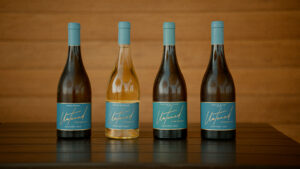Sipping on Science: Acidity of Wine
When you think winemaking, I bet your mind immediately jumps to a Hallmark movie with scenery of vineyards, barrels, and a slow-motion pour of red wine. I hate to discredit those lovely images, but making wine involves a lot less magic and a lot more science.
It’s our goal at Untamed to give you a new appreciation for wine, one that illustrates the reality and ingenuity that is created behind the cellar door. So let’s start by diving into the basic raw science. Today’s topic involves the most important aspect behind wine, acid.

Imagine I pour you a taste of two wines: one is a Sauvignon Blanc and the other is a Chardonnay. Go ahead and take a sip of each. Can you picture what happens to your salivary glands when you take a sip of the crisp Sauvignon Blanc versus the buttery Chardonnay? I bet your mouth will water when trying the first wine. The same sensation happens when biting into an unripe fruit, this watery reflex is due to the acidity.
Acid
Acid is naturally found in all fruit, this is what makes an unripe fruit taste sour. Like fruits, the grapes that produce wine also naturally contain acid, but the amount of acid varies depending on varietal, climate, location, and mostly Mother Nature. When grapes ripen on the vine, they begin very acidic and slowly decrease in acid over time. Harvesting of the grapes is left to the winemaker’s discretion based on the timing when the optimal acids occur (sugar and tannin also play a part in this decision, but we’ll discuss those on a different day).
Testing
How do we test for acidity? We test for acidity using an old-fashioned pH meter, measuring the concentration of free hydrogen ions. The lower the pH measurement, the higher the acid. Wine typically ranges between 3.0-4.0 whereas water will remain closer to 7.0.
In addition to pH, we also test for the titratable acidity (the total amount of hydrogen ions). In English: pH tells us how much acid is in the wine, titratable acidity tells us how strong that acid will taste.
Food & Wine
Speaking about taste, acidity plays an important role when pairing wine and food. As a general rule, wines with higher acidity pair well with rich foods: for an example, our crisp Sauvignon Blanc with pork chops or a creamy pasta. Wines with a buttery texture pair well with more acidic dishes: for another example, our oaked chardonnay with chicken piccata or lemon risotto.
Before serving the wine, I recommend chilling the crisp wines cooler than the buttery wines (i.e. Sauvignon Blanc cooler than the Chardonnay). This can also be applied to red wines (i.e. Pinot Noir should be served slightly cooler than a Cabernet Sauvignon).
Next Time…
Now that we’ve learned about acid, we’ll take a further look into exactly what acids are in wine on the next blog. This will help answer the question: if Sauvignon Blanc and Chardonnay have generally the same pH, why is one crispier than the other?


